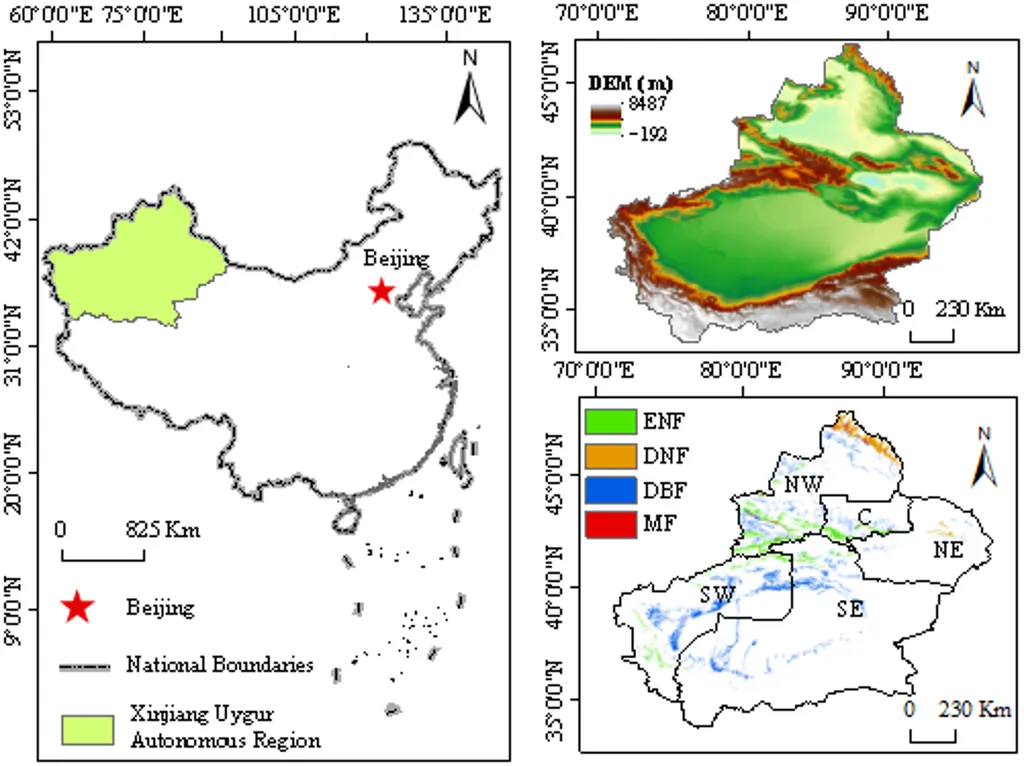In the vast, arid landscapes of Xinjiang, China, a silent battle is unfolding between nature’s ability to absorb carbon and the region’s growing carbon emissions. A recent study led by Shunfa Yang from the School of Geographical Science and Tourism at Xinjiang Normal University, published in the journal Ecological Indicators (translated as “生态指标”), sheds light on this complex dynamic, offering crucial insights for the energy sector and policymakers alike.
Xinjiang, China’s largest provincial-level administrative unit, is a critical region for understanding the carbon cycle in arid environments. Yang’s research, which spans two decades from 2000 to 2020, reveals a stark reality: while vegetation in Xinjiang has been steadily increasing its carbon absorption capacity, the region’s carbon emissions have been rising even faster, tipping the scales towards an imbalance.
The study employed advanced modeling techniques, including structural equation modeling (SEM) and partial correlation analysis, to dissect the factors influencing carbon emissions and vegetation Net Ecosystem Productivity (NEP). “We found that precipitation was the primary positive factor influencing NEP, while temperature, human activities, and the Temperature Vegetation Dryness Index (TVDI) acted as negative factors,” Yang explained. This intricate interplay of factors highlights the delicate balance that must be maintained to harness the carbon sink potential of arid regions.
The findings paint a vivid picture of Xinjiang’s carbon landscape. The northern and western parts of the region are emerging as significant carbon sinks, with areas like Altay, Bortala, and Bayingolin leading the way. In contrast, the eastern and southern regions, along with cities like Changji, Hami, Karamay, and Urumqi, are the primary carbon source areas, contributing to a substantial 61.31% of total emissions.
The study’s most striking revelation is the tipping point that occurred around 2012. Before this year, Xinjiang’s vegetation NEP was sufficient to offset carbon emissions, achieving a state of carbon neutrality. However, the rapid rise in total carbon emissions post-2012 has since surpassed the total carbon sequestration by vegetation NEP, disrupting this delicate balance.
For the energy sector, these findings underscore the urgent need for a dual-pronged approach. “To achieve Xinjiang’s ‘dual carbon’ objectives and effectively mitigate carbon emissions, it is crucial to accelerate the economic transformation of the four major carbon source regions while enhancing vegetation carbon absorption capacity in six key carbon sink regions,” Yang emphasized.
The commercial implications are significant. Energy companies operating in Xinjiang must navigate this complex carbon landscape, balancing their operational needs with the imperative to reduce emissions. Investments in renewable energy sources, coupled with initiatives to enhance vegetation cover and carbon absorption capacity, could prove to be strategic moves in this evolving scenario.
Moreover, the study’s findings provide a valuable reference for future research on carbon cycling and carbon neutrality in arid regions. As the world grapples with the challenges of climate change, understanding the carbon dynamics of arid regions like Xinjiang becomes increasingly critical. This research not only offers scientific guidance for achieving carbon neutrality goals but also paves the way for innovative solutions that could shape the future of the energy sector.

